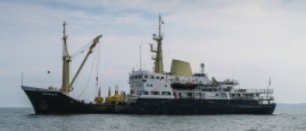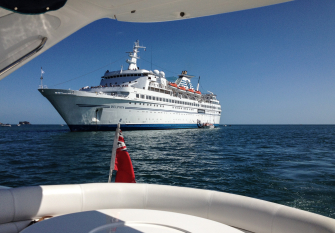Passage Planners
Watchkeeping - essential for all voyages
On leaving port, watchkeeping should start immediately. We tend to do it without thinking, particularly on short passages which we may have travelled many times.
We generally carry it out under the guise of ‘keeping a safe lookout’. Within two or three hours we are either arriving at a local
port down the coast, or maybe approaching our home port. Either way, those crew on board are all watching as a matter of course aren’t they?
However it is a different matter when the passage is long, maybe covering many hours or indeed several days or even weeks. This will involve day long watching, going into full night passages. The watchkeeping must not diminish throughout the voyage, and the only way to ensure that this is observed is to share the duties with the crew on board.
Often the crew, including the skipper will be a maximum of two. This can make the watchkeeping, particularly on a long passage, long and difficult and with a fair degree of sleeplessness for the two crew. At other times there may be more crew on board to share the duties. This will make for easier and less watchkeeping duties for the crew, either by reducing their watchkeeping periods and/or by having crew share the helming, other duties and time on deck.
However many, or few crew there are to share this essential task, it is generally up to the skipper to establish and agree a watchkeeping rota, which is fair to the crew and which shares out the duty, such that on long passages the crew members do not always have the same day or night watch periods. A good rota will have periods of ‘Watchkeeping’, followed by a period of ‘Complete Rest’, followed by a period of ‘Standby’ prior to the next period of ‘Watchkeeping’ duty for each crew member.
Following the watchkeeping period, the crew member has ‘Complete Rest’ when he is not required (except unless an emergency is called) to carry out any boat keeping duties. During this time he will rest/sleep and recuperate. His next period will be on ‘Standby’, whereupon he will carry out, as necessary, shared boat duties which may include some meal preparation as required.
Depending on the number of crew available, watchkeeping periods may be shared by more than one crew, with the advantage of keeping each other company, as well as shared responsibility of the watchkeeping duties on deck relating to helming, lookout duty, navigation checks, log keeping, and other tasks as required on passage.
On most passages, and depending on how many crew is available, the skipper will take his turn on the rota. However in some rota schedules the skipper may not take an active part. This is not because he is lazy or ‘pulling rank’. Quite the opposite. The skipper may well be the most qualified member of the crew and furthermore, he is totally responsible for the boat and it’s crew throughout the voyage.In some circumstances he will be on call throughout the day or night and will be
on hand for specific operations (e.g sail changes and reefing, deterioration of weather/increasing wind speed, increased traffic) together with certain standing orders which may require him being informed and/or his presence on deck. During such periods he may carry out much of the meal preparation in order to relieve other crew members. He may also spend time on deck to be with the duty watchkeepers. It should be noted that port entry, whether by day or night, and possibly one not previously visited, will be under the control of the skipper, who needs to be alert, rested and not tired.
It is not the aim of our website to teach good watchkeeping routines or scheduling, as there are many articles to be found on the internet dealing with the strategy, discipline and duties required for, and of the various techniques for effective watchkeeping. The strategy for making good rotas is also discussed for different sizes of crew.
Some good articles on watchkeeping may be viewed by following the links at the end of this article. The RYA Day Skipper, Yacht Master, Coastal and Ocean Yachtmaster courses all require knowledge of watchkeeping, this being essential knowledge for the higher RYA qualifications.
Following the agreement of a strategy and schedule for a watchkeeping rota, it needs to be written down so that all crew members are able to see when they are on and off duty during the period of the passage. As this could be over a period of many days, it is essential that all crew are aware of their duties in connection with the rota.
Our Watchkeeping Form design
Over a period of time we have used various ways to write watchkeeping schedules which give clear information to all crew members, and we have used the forms offered with success. We recognised that the skipper is not always 'au fait' with the specific experience of each and every crew member, and so we include such details in the information part of the plan. We found it most suitable to reference crew members experience in relation to the various RYA sailing qualifications. This gives the skipper (and indeed other crew members) some idea of each of the crew’s sailing experience. It also helps the skipper to decide who should share duties, should such an option be available.
Other areas of inclusion are basic details of the start/end of the route, date and crew names. The major part of the schedule allows for the watchkeeping schedule for the named crew members. It includes for ‘standard’ meal times, but these can be changed as required. It allows for clearly defined watchkeeping, complete rest periods and standby periods which can be easily understood by all crew. The reverse side of each form is a continuation sheet, to be completed as required. Each form allows for scheduling between three and five consecutive days of watchkeeping. This allows for future amendments to be made by repeating the schedule, or by erasing parts of the schedule to be ready for amendments as required.
We have watchkeeping forms for Two, Three, Four, Five and Six crew members (including skipper). We also offer a pack of all five forms at a discounted price.
Each form is plastic encapsulated with a completely waterproof matt surface, which can be written on using B grade pencil, for subsequent erasure and reuse as required later, or for the next passage watchkeeping rota. ✱
(Link opens in a new tab)




